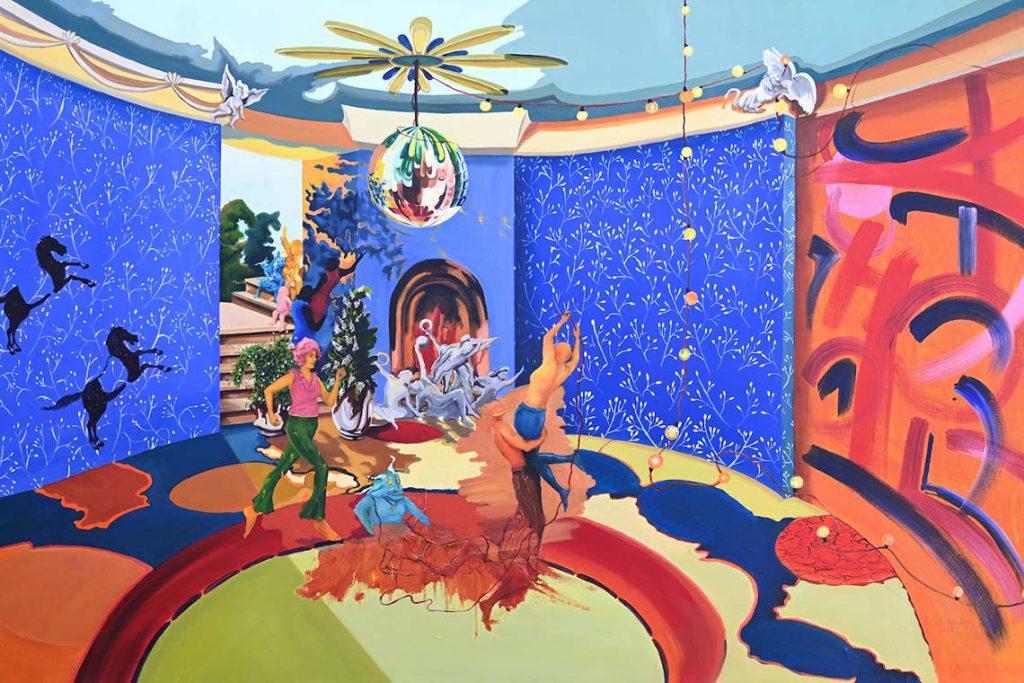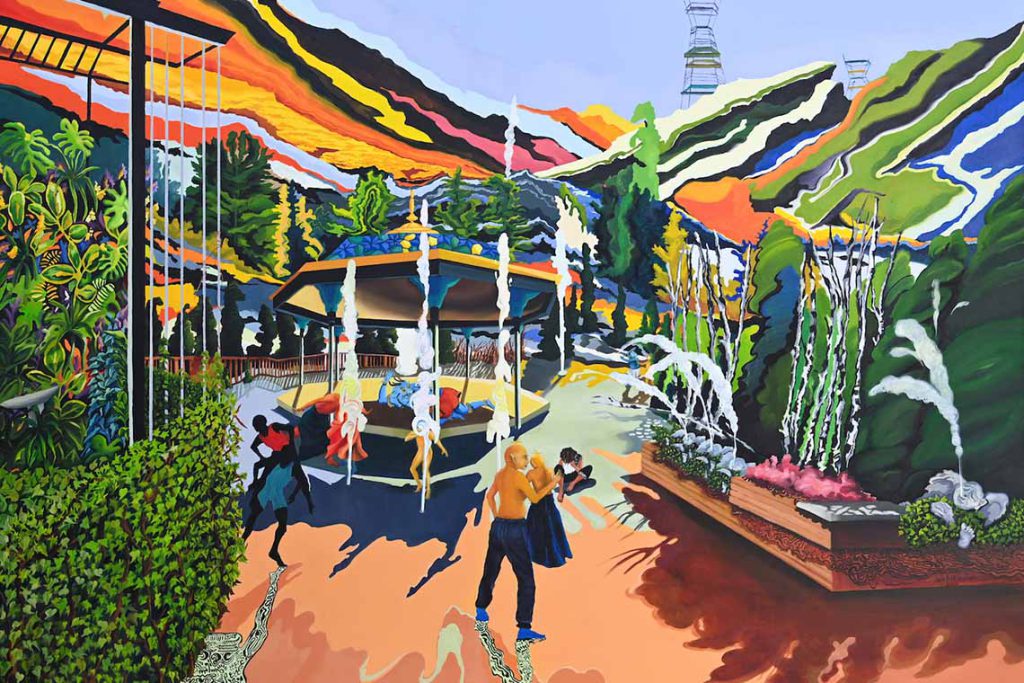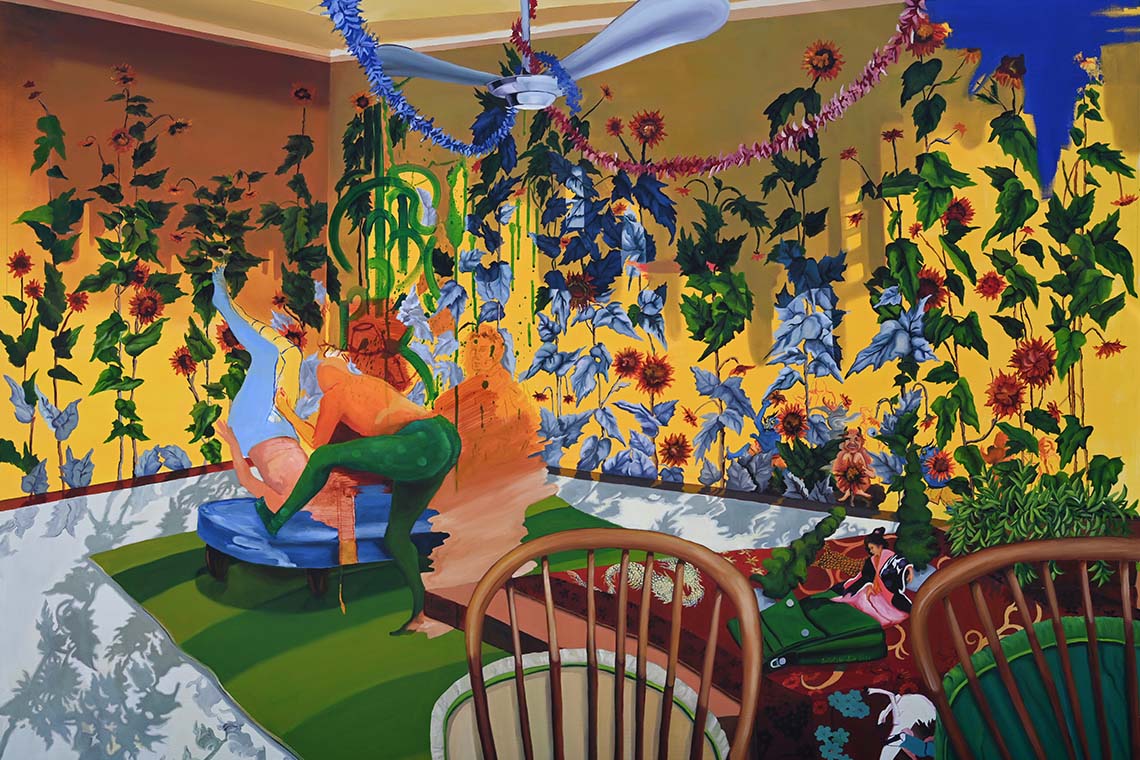Leila Eskandari’s solo exhibition Whispers of Legends at Zawyeh Gallery takes viewers into a painted realm of Iranian mythology.
Leila Eskandari’s current exhibition, Whispers of Legends, presents a mythical world where visitors are immersed in vibrant scenes replete with lingering figures, enchanting landscapes and detailed visual narratives. The artist’s deep connection to her cultural roots is evident in her lyrical artistic expression and unique interpretations of ancient tales and mythological legends.
Upon entering Zawyeh Gallery, the visitor’s eyes are immediately locked onto the intensity of colour that emanates from Eskandari’s artwork. Inspired by folkloric tales, she creates an imaginative world that tricks the audience’s eye by incorporating swirls into her pieces. Instead of conforming to conventional architectural constraints, she cultivates fluidity, allowing figures to intertwine while maintaining discernible shapes and context.

Eskandari’s fascination with Iranian myths began during her early childhood, inspiring her to create her imaginative perception of a mythical world. For the exhibition, she specifically delves into the Book of Kings, also known as the Shahnameh, written by the 11th-century poet Ferdowsi. The epic poem was crafted with over 50,000 rhyming couplets and acts as a repository of Iranian myths, stories and historical narratives which has become the core of Eskandari’s creative journey as she takes inspiration from the love stories and myths that amplify her perception of the world around her.
Through her large-scale paintings, Eskandari goes beyond representation, enhancing each stroke with meaning and intention. Colours become storytellers, conveying the spirit of place and the essence of the human experience. They provoke thought, stir emotion, and invite the viewer to explore the intricate tapestry of relationships between spaces and the creatures that inhabit them, bridging the contemporary realm with timeless myths.
The use of objects and architectural elements enhances the connection created by Eskandari between spaces and recurring figures, blending harmoniously with the colour and the settings within each scene. This is exemplified through intimate spaces, such as the living room in Redemption (2024), or public spaces amongst architecture and nature as seen in Unveiling the Shadows (2023), yet across all locations, these mythical characters are present. “Everywhere I have ventured, I have endeavoured to forge connections between the spaces and characters from those tales and the environment that surrounds me,” she explains in the exhibition text.

As the series travels through indoor and outdoor locations, they also invite the audience to probe notions of time and space. Seamless lines connecting the hills make the viewer question the balance of movement by blurring distinct boundaries of form.
Within the exhibition space, each artwork is celebrated and hung on a plain white wall, providing a focal point to the visitors and an opportunity to immerse oneself in each individual painting. However, while the current space of Zawyeh Gallery adequately showcases Leila Eskandari’s artistic prowess and thematic exploration, one might imagine a larger setting as an ideal backdrop for her vivid narratives to unfold with even greater impact and resonance, enriching the viewer’s engagement with both the artworks and the cultural heritage they represent.
Eskandari’s artistic journey not only pays homage to Iran’s cultural heritage but also emphasises her role as a storyteller who bridges the past and present. Her works serve as a vibrant testament to the enduring power of myth and the universal themes of heroism, love, and destiny that continue to be pertinent throughout time and space.



